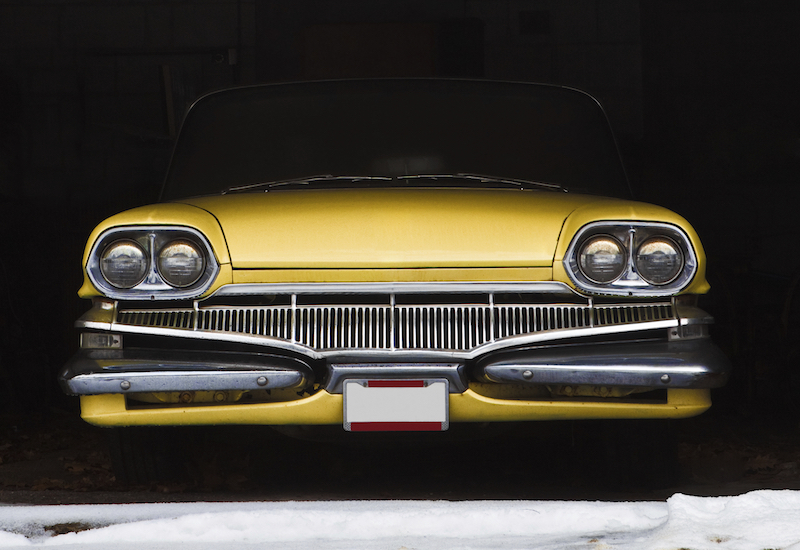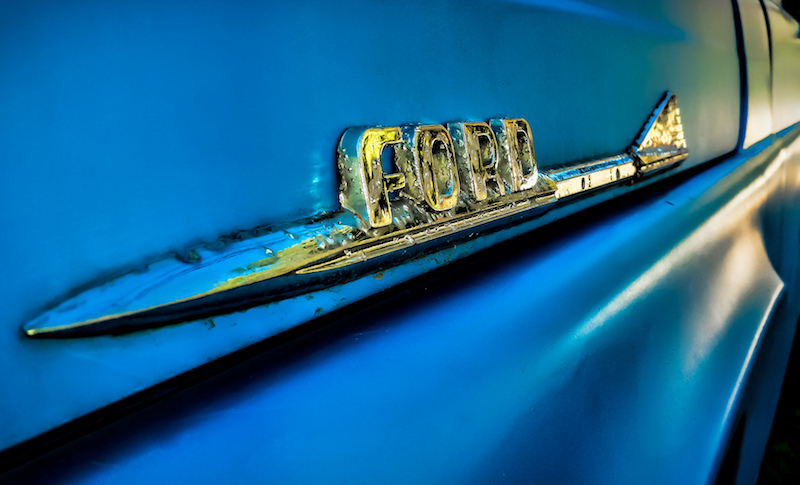Winter is here and the cold temperatures can take a toll on us, no doubt, but it's equally harsh on our vehicles. Preparing for winter is an essential part of car ownership, and as DIYers, we can't forget about a particular aspect of winter that causes damage: road treatments.
Since avoiding the roads isn't much of an option for us, here are some tips on how to protect your car's exterior from the winter grime.

Source | Getty
Why the mess?
State and local road services scatter salt or coal ash on the road in order to promote ice melt and increase grip during slick conditions. That's great, but both ingredients are terrible for exposed metal parts. Drivers knew this way back in the Ford Model T days and liberally applied used motor oil to the chassis. It somewhat worked for preventing rust but made quite a mess. Used oil coatings are illegal in many places now and today's solutions are far superior.
If you've ever wondered what happens if you never wash your car, you're not alone! Here's what we found out.
Keep it clean
First, it's easier to keep a clean vehicle rust-free. Wash your ride as often as it needs, especially after driving through salt and ice-melt treatments. Use a high-quality car-wash soap and lint-free towel, being sure to get everything off the paint and out of the wheel wells. If it's too cold to get out and spray on your own, pay a few bucks and run the vehicle through a touchless-type car wash. It's cheap, takes only a few minutes, and will do the trick in a pinch.
Wax on
Wax is a great product to have on your vehicle year-round but especially in winter. Rather than just a UV barrier in the summer, wax acts as an additional layer of protection between your paint and clear coat and the nasty grime on the road. Like a plumber wearing heavy-duty gloves, its protection is used for a reason. Use a good quality car wax before the first snowfall and road treatments for the best protection and reapply the product per manufacturer recommendation.
Knock it off!
If you drive at all during harsh weather conditions, some grit and grime will make it through the above layers of defense and get stuck to your paint. It's best not to let it sit, as gunk left for days, or weeks can start to weaken the clear coat or can scratch the paint when finally cleaned off. A clay bar, a detailing favorite of the show-car crowd, can help your daily driver. Clay bars are just what they sound like: a bar of clay that is carefully glided over a lubricated painted surface. (Clay bar products also come in synthetic and spray forms as well, making it easier for DIY customers to use and get great results). The clay is gritty at the microscopic level and acts as a deep-cleaning paint treatment, removing any stuck-on particles and even imperfections in the paint. Kits are affordable, simple to use, and provide stunning results.
If you haven't used a clay bar or clay bar product before, check out our guide on how to properly use one to get the best results.
Be on guard
Every few weeks, take a quick look at your vehicle, watching for any chips in the paint or exposed metal. Most manufacturers offer touch-up paint (here's how to apply it) in factory colors that cover rock chips and prevent rust. Have a good look at the underside at every oil change and use a rust-eating solution with a properly prepared undercoating spray to prevent damage for years. If you switch to snow tires for the winter, it may be worth investing in powder coating the wheels, which makes them nearly impervious to road grime and corrosion. Just a small investment of time and a few dollars of preventative maintenance will help keep your vehicle clean this winter and potentially save you thousands in maintenance costs or lost depreciation.
Learn more about maintaining your vehicle's appearance, plus find exciting deals and some great how-to videos!
Let us know how you winterize your ride in the comments below.







